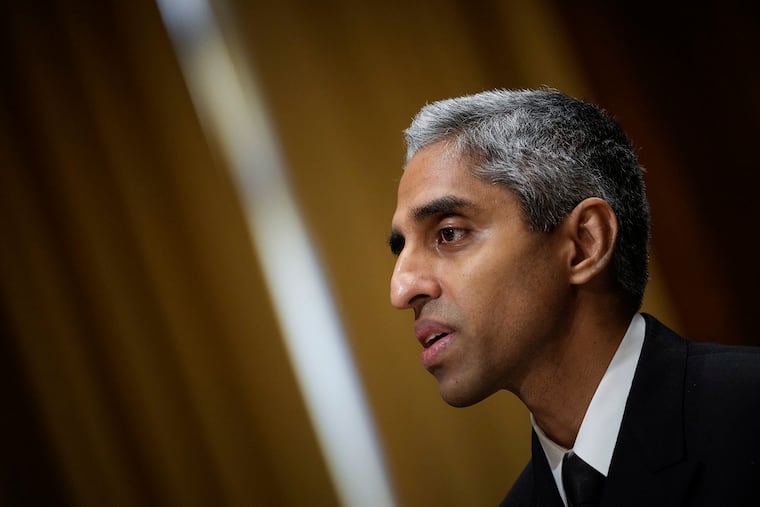A toxic workplace can hurt employees’ mental health. The U.S. Surgeon General came to Philly to roll out a plan to improve mental health
The U.S. Surgeon General said he “wanted workplaces to have a foundation for how to transform workplaces into engines for mental health and well being.”

The nation’s doctor came to Philadelphia on Thursday to discuss an ailment that’s not usually discussed in medical checkups: workplace toxicity.
If your workplace adds stress to your life and hurts your overall well-being, U.S. Surgeon General Vivek Murthy wants you to know you are not alone. Murthy’s local visit underscores his concern that toxic workplaces have a significant impact on America’s mental health and well-being.
» READ MORE: Art Museum employees return to work with a union contract. But bad blood still lingers for some.
His trip was pegged to his office’s launch of a national framework for promoting healthy workplaces. Murthy spoke to The Inquirer ahead of a release event at the National Constitution Center, where he met with executives from Children’s Hospital of Philadelphia, Comcast, Pinterest, and the nonprofit Empower Work.
“The workplace has an undeniable effect on your mental health,” Murthy said in a phone interview. “I wanted workplaces and workers to have a foundation for how to transform workplaces into engines for mental health and well-being.”
Murthy said that Philadelphia has “long championed workers” and that he also planned to meet with local restaurant workers.
Post-pandemic workplace stress
The pandemic has put a spotlight on the relationship between work and well-being. Large numbers of people left their jobs in the last two years as they reassess their priorities in a phenomenon dubbed the Great Resignation. More recently, reports of “quiet quitting,” a moniker for placing strict boundaries between work and non-work hours, have come in sharp contrast to years of “hustle culture.”
Various surveys show that up to three quarters of U.S. workers across industries have reported at least one symptom of a mental health condition, and that these percentages increased since the onset of the pandemic.
An American Psychological Association survey of workers from last summer found that among the top stressors that workers reported were low pay, long hours, and lack of advancement opportunities. The survey also found that workplace monitoring, including through software, is common and could be harmful.
Surgeon General guidance for workplace mental health
The Surgeon General’s Framework for Workplace Mental Health and Well-Being is meant to provide workers and employers with a road map to address some of these stressors.
It outlines five “essentials” to a workplace that promotes well-being. The first is ensuring that workers are protected from harm, both physically and psychologically, from violence, environmental hazards, and racist and biased workplace culture.
Other “essentials” for employers include fostering connections and community, ensuring work-life harmony, securing a sense of worth for workers, and offering opportunities for growth.
In addition to calling for benefits such as a living wage and paid leave, the framework calls for supporting the use of mental health services, enabling adequate rest, creating a culture of inclusion, and respecting the boundary between work and non-work time.
“Pay is vital to knowing, for example, that you are valued,” Murthy said. “But it is about more than just pay.”
Murthy has had an ongoing focus on issues of mental health. In December 2021, his office issued an advisory warning of a youth mental health crisis. Last May, he sounded the alarm on health worker burnout.
The surgeon general can only offer recommendations and guidance to employers, and the office doesn’t have the power to compel businesses to change. But Murthy is hopeful that businesses will see that investing in workers’ mental health and well-being benefits everyone.
“Companies do better in terms of productivity, in terms of creativity, in terms of retention,” he said. “This is really a win-win for workers and workplaces.”